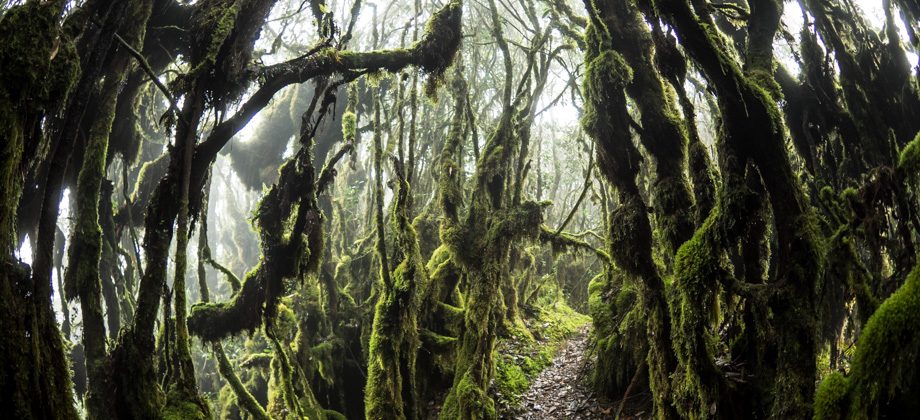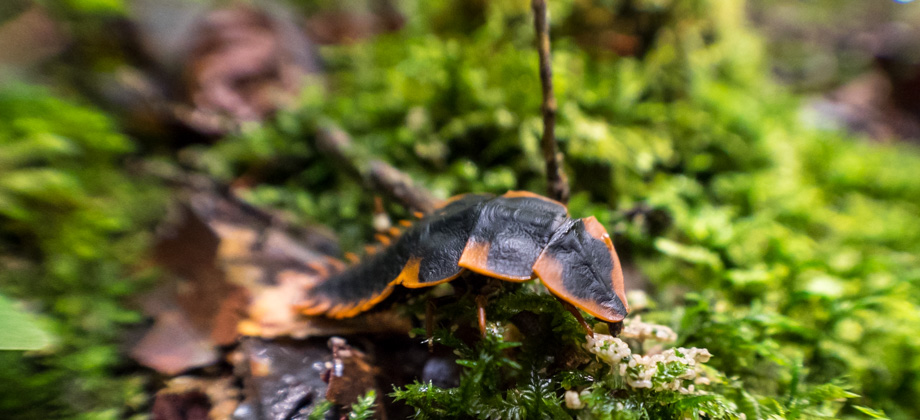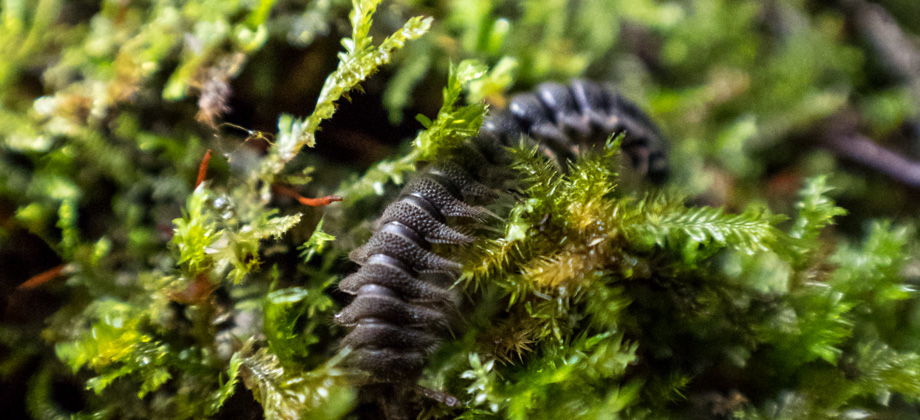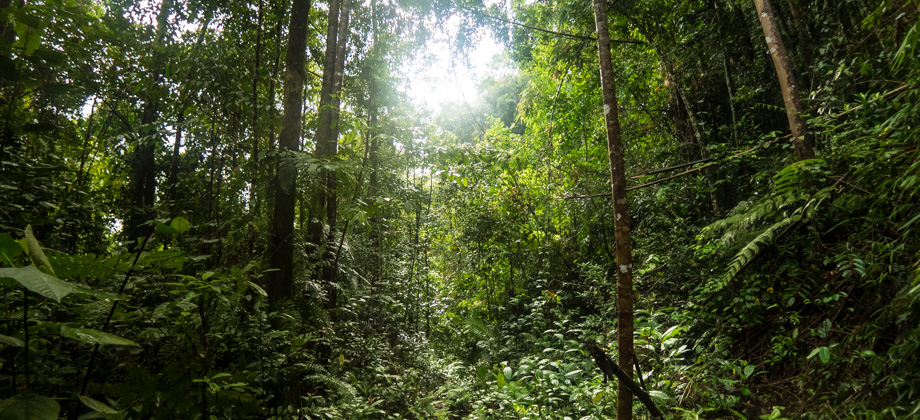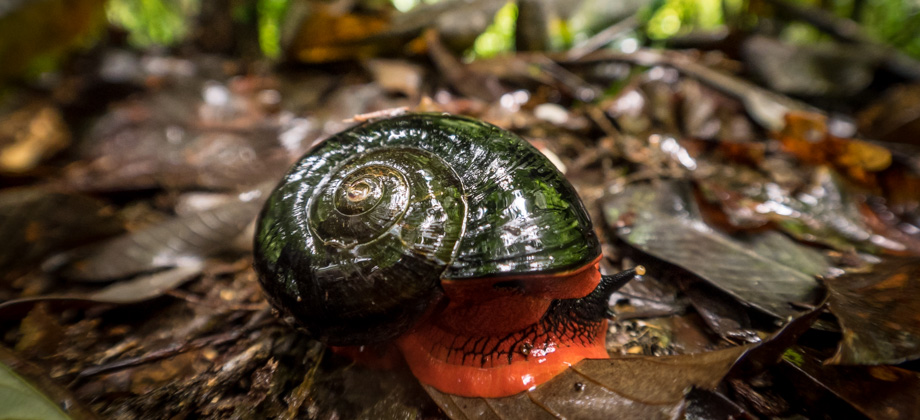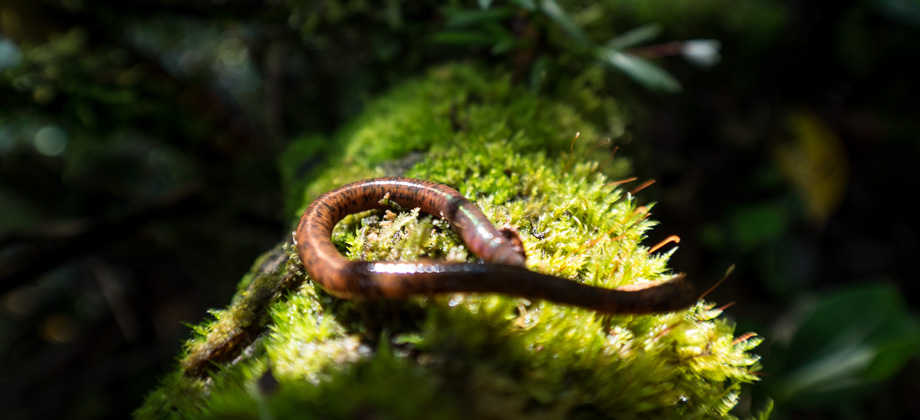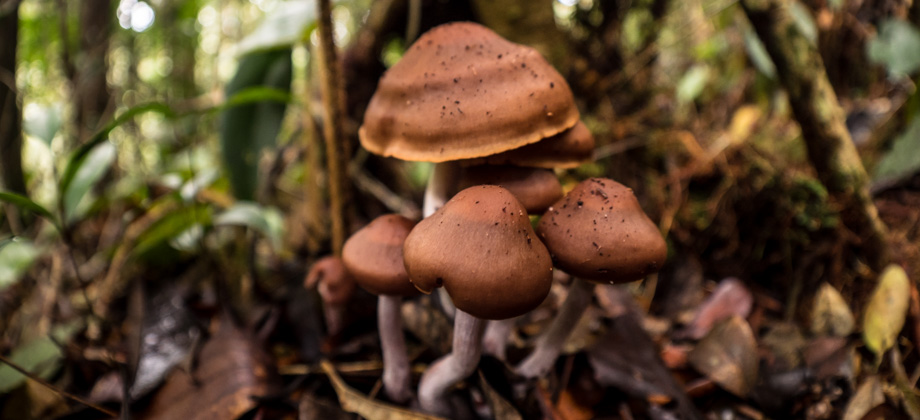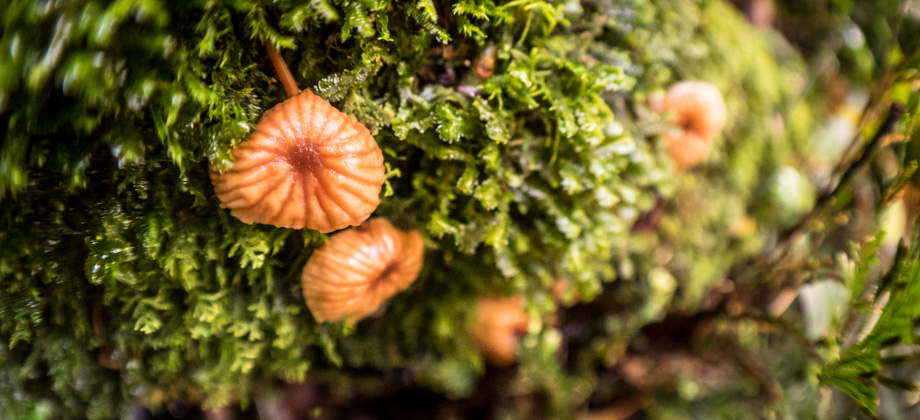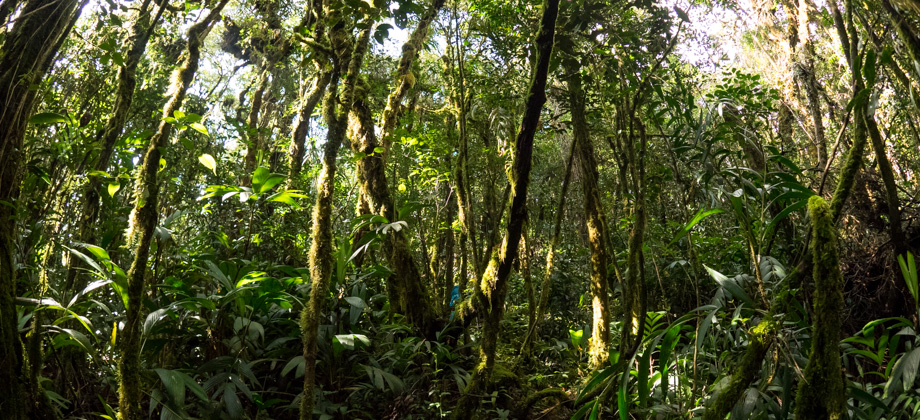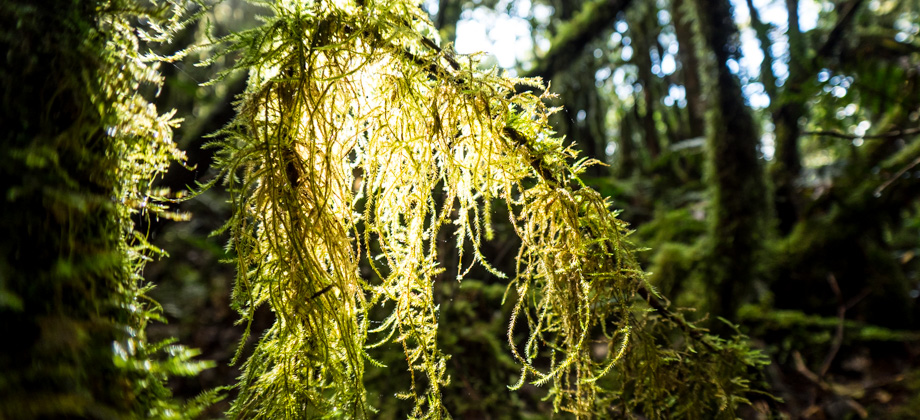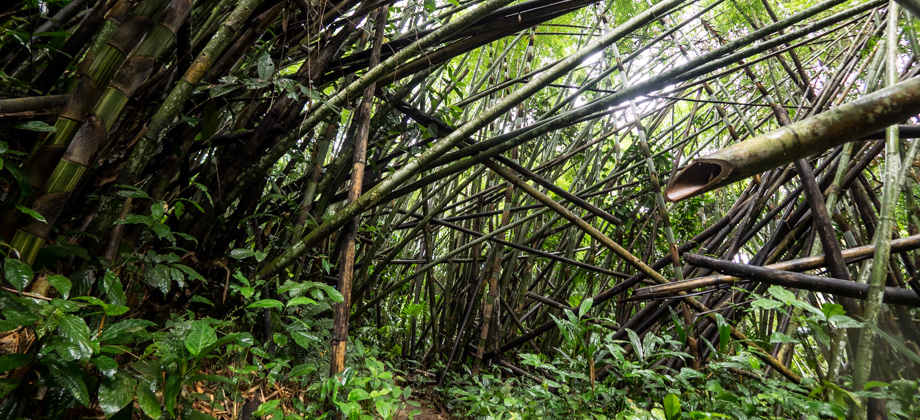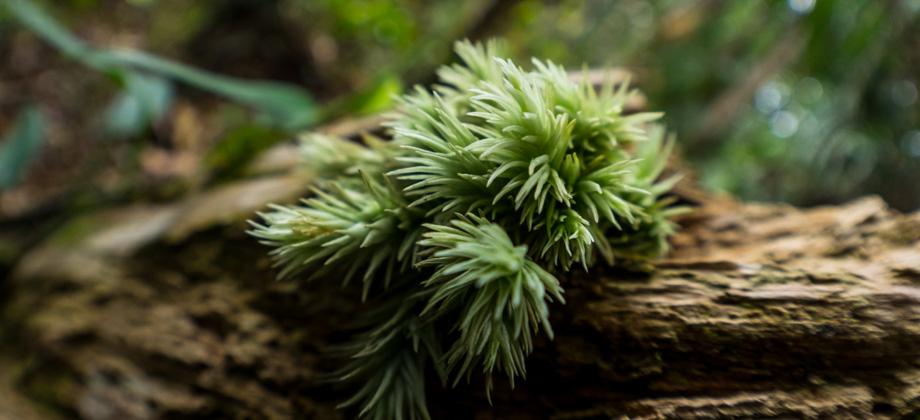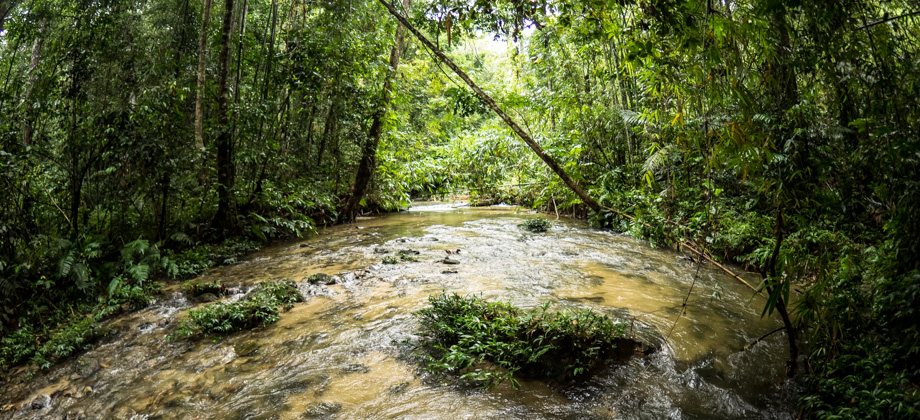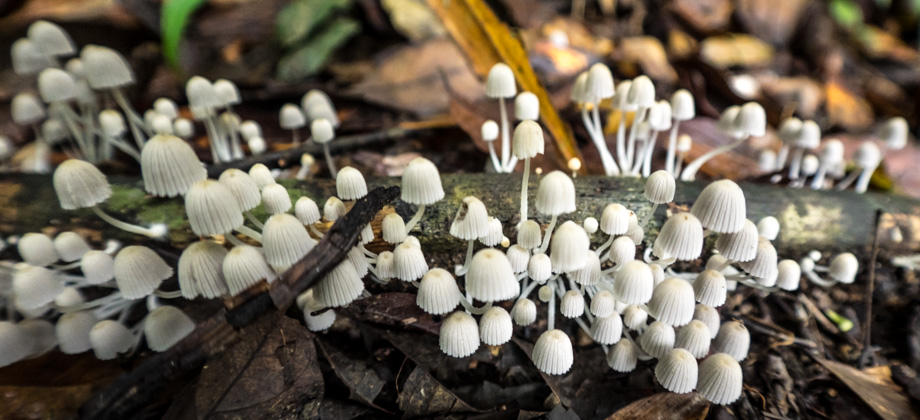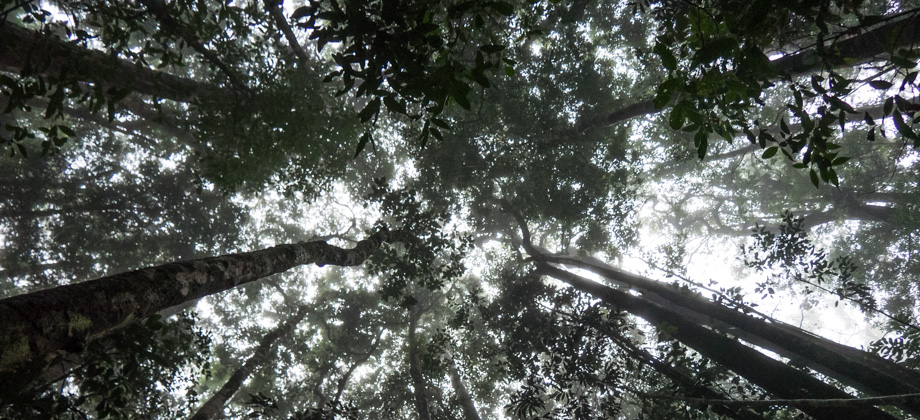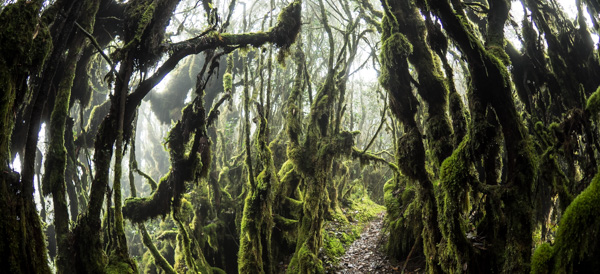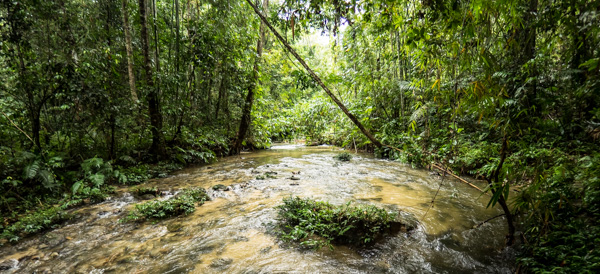GBB (CUS Connection) - Day 2
Abundant Ferns
It began to rain once again after lunch. From there, the trail was on the same side of the river that we had been on before and continued to run parallel to it. We reached 'Sungai Betis Camp' approximately a kilometre from the lunch stop, and the trail veered right from there. It then seemed to melt away and we struggled a little trying to find the way once again. Ferns were very abundant here, and all the usual suspects were seen: ubiquitous birds-nest ferns (Asplenium nidus) were perched high above our heads; paku midin (Stenochlaena palustris), the most popular edible fern, lay inconspicuously at the sides of the trail; and a mind-boggling variety of fern fiddleheads rose up on their stalks. The fiddleheads, which are the curlique manner in which the new fronds of ferns emerge, are a way for the fern to protect the tender tips of the frond within the coil. This process is referred to as 'circinate vernation'. As the frond continues to harden, the fiddleheads expand and the coil slowly begins to unfurl.

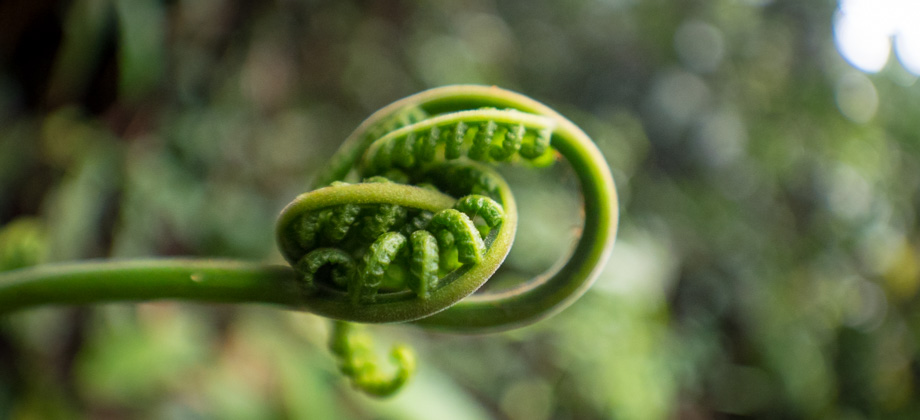
"Other plants such as ferns also produce sporangium but they are instead located in 'nodules' that are arranged in lines along the leaf edges, something that veteran hikers are probably quite familiar with. The immature sporangia has the appearance of bumps or green 'bubbles', whereas the colour tends to change to orange-brown once mature. Spikemoss (Selaginella spp.) on the other hand, are neither moss nor fern. Instead of producing stalks or nodes, these plants produces something called a 'strobilus' which is a hardened tip at the end of their leaves that functions similarly to spores."
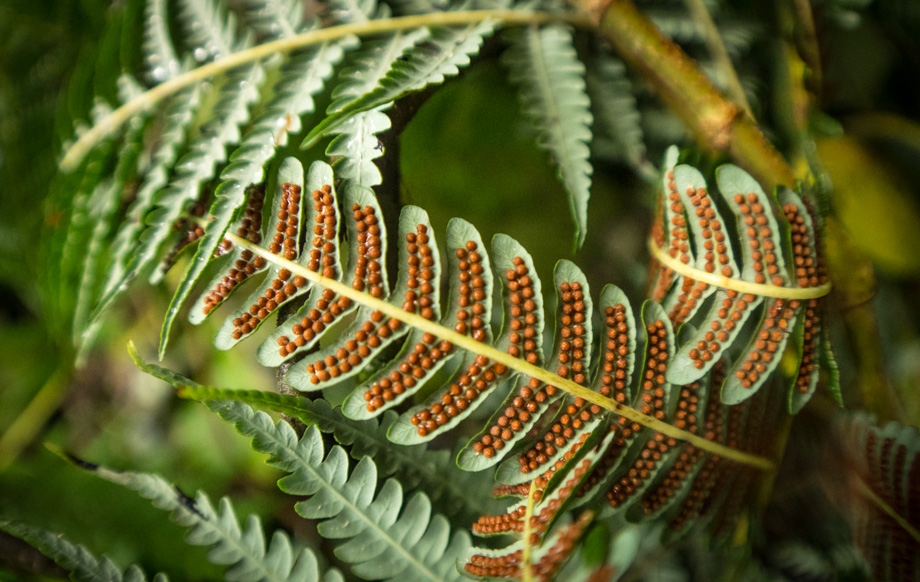
Nature's Iridescence
Speaking of spikemoss, there were plenty of examples along the trail that showcased the vibrant iridescence of their leaves. The leaves came is variations of rusty-red, metallic-brown, and vibrant hues of turquoise. The changing sheen apparently improves the efficiency of their photosynthesis when the plant is in the shade, and uses a process that is not too dissimilar from the iridescence of other animals--the wings of a butterfly, the scales of fish, and the feathers of peacocks are just a few that come to mind. The light gets reflected multiple times as it passes through a transparent surface, and it is these reflections that enhance the colours and gives it that shimmering effect.
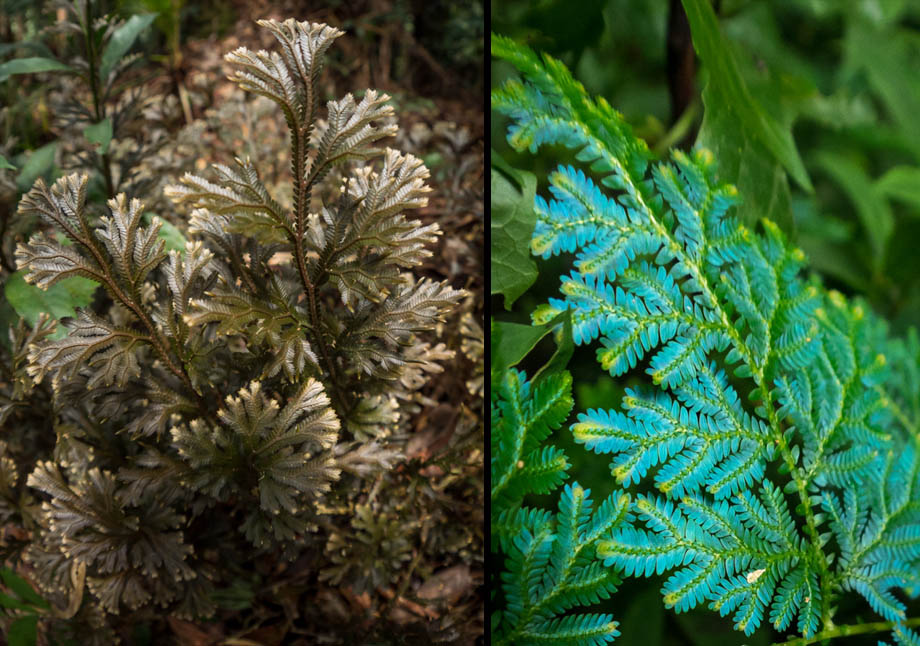
Hover your cursor over the image to see what the plants normally look like

